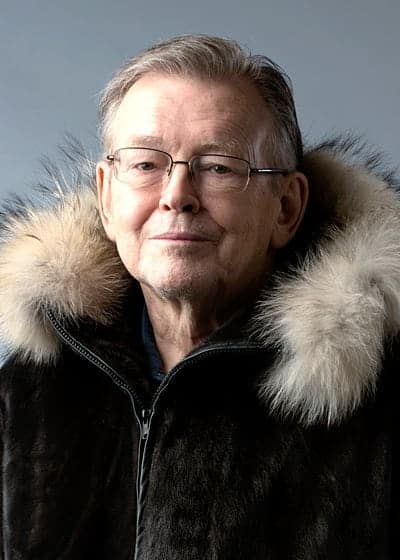Step back in time to a land of extremes, where men toiled to find the Northwest passage and murder in the high Arctic changed a culture forever.

That is the story told in Thou Shalt do no Murder, a novel written by Kenn Harper, which was released Sept. 25 at the Ottawa Writer's Festival.
The story pulls the reader into the lives of the characters of that time. Men hardened by harsh winters spent in ice, trading with the Inuit of the high Arctic and securing the north for a future Canada. Harper manages to tell events in a very personal way, Harper said this is accomplished through immersing himself in the culture for 50 of the 72 years he's been alive.
"I went to the arctic in the mid 1960's and stayed for 50 years. I went north as a teacher to Qikiqtarjuaq first and I taught in four communities," he said. "But, all the time I was listening, researching and writing. I spent all the time I could with people, speaking Inuktitut, studying Inuktitut and hearing their stories."
Harper moved to Arctic Bay from southern Baffin in 1971 where he was employed as the school principal.
"The school there was I believe only three teachers at the time and because I had been living in southern Baffin for some years I already spoke Inuktitut, so I moved to the high Arctic."
This would be where he would hear the story of Robert Janes and his eventual demise at the hands of Nuqallaq.
"The dialect was a little bit different, but not much. I heard stories from the elder people, in particular one elderly man who used to come and visit me and he started telling me this story. His name was Jimmy Etuk," he said. "I spent a lot of time with him and so you know he was the first person that told me about the Robert Janes story."
Harper's book is rife with archival photos of the characters that make appearances in the story which unfolds in Cape Crauford in 1920. The photos lend a visual aspect to a riveting story which at times is hard to believe is a true story. The book expresses how the Inuit could never have expected what it would mean to become a part of the commercial expansion of Canada or how three years later a trial would change the Inuit's concepts of law.
Harper said his 50 years in the high Arctic, Greenland and Baffin and the time and hard work he put into learning the language and immerse himself in the community were the biggest part of inspiring him to share this and other stories of the north.
"I would say that the Inuktitut language is the key to most of my interest in arctic history and Inuit culture," he said. "Because if I had not been able to understand Inuktitut I probably never would have heard even the basics of this story."
He said he's always been interested in Arctic history has read the standard arctic histories, but wasn't interested in writing a re-hash of all the stories that have been done so many times before.
"I just felt myself being pulled in a different direction, because I was able to speak and understand Inuktitut and hear things that other people who hadn't learned Inuktitut weren't hearing."
Harper also released a second book alongside Thou Shalt do no Murder, at the festival in Ottawa – Minik, The New York Eskimo – and said he has another book in the works, an Inuit story that takes place in Labrador and the United States.
When asked what he has planned upcoming, Harper said, "I'm just looking forward to promoting the books and I'm going to Norway in early December to give a lecture in a lecture series at the Fram museum there."
"But other than that I just intend to hunker down here and get back to writing."
